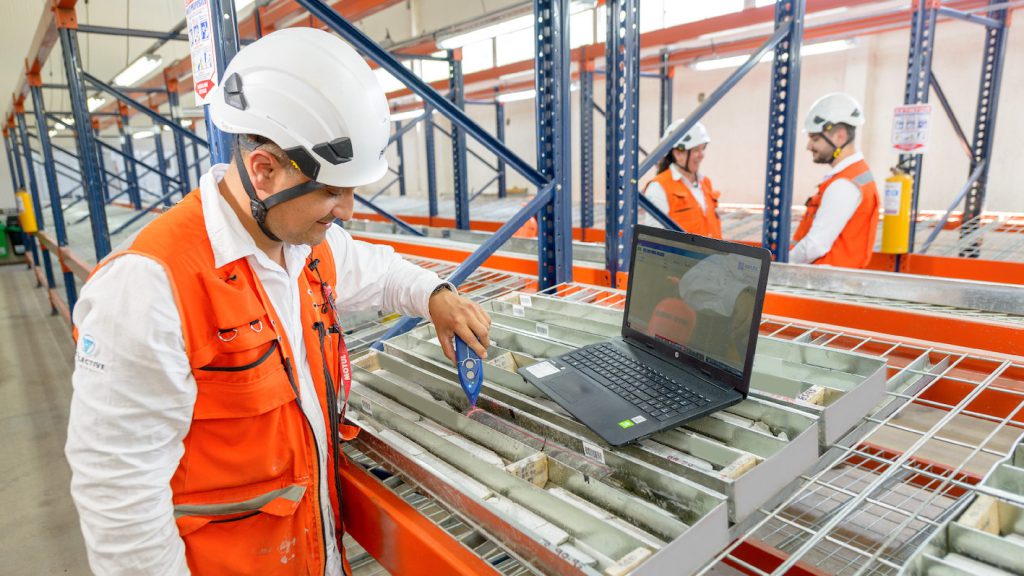Collective Mining drills 8 g/t AuEq over 35 metres at Guayabales, Colombia

Collective Mining Ltd. [CNL-TSXV; CNLMF-OTCQX] reported assay results from an additional two drill holes completed from pad 6 as part of the phase II program at the Guayabales project located in Caldas, Colombia.
The aim of the Phase II program is to test and define through drilling the shallow portion of the Apollo porphyry system as well as continue expanding the system through step-out drilling. The Apollo porphyry deposit is a high-grade, bulk tonnage copper-silver-gold system, which owes its excellent metal endowment to an older copper-silver and gold porphyry system being overprinted by younger precious metal rich, carbonate base metal vein systems (low and intermediate sulphidation porphyry veins) within a magmatic, hydrothermal intermineral breccia body currently measuring 395 metres x 385 metres x 915 metres and open for expansion.
Assay results for two holes APC-33 and APC-35, intended to test the mineralized outcrop of the Apollo porphyry system, intersected significant continuous high-grade copper-silver-gold mineralization from surface as follows: 359.15 metres of 3.32 g/t AuEq (gold equivalent) (consisting of 1.84 g/t gold, 48 g/t silver and 0.48% copper) in drill hole APC-35, including 35.30 metres of 8.06 g/t AuEq from surface in oxides, and 47.85 metres of 5.58 g/t AuEq from 318.30 metres to the end of the hole.
Drill hole APC-33 returned 374.70 metres of 2.22 g/t AuEq (consisting of 0.85 g/t gold, 53 g/t silver and 0.34% copper), including 42.85 metres of 4.50 g/t AuEq from surface in oxides.
The intersection in drill hole APC-35 is the highest grade (grams X metres) hole drilled to date at the Apollo porphyry system.
Both holes terminated while still in strong mineralization at over 350 metres vertical depth. Deeper drilling is planned as part of the 2023 Phase II program.
Significant and continuous copper mineralization was intersected in both drill holes beginning directly below the oxide zone of mineralization and continuing to the end of the holes.
Four additional drill holes have been completed from drill Pads 6 and 7 with all four holes appearing to have intersected continuous mineralization from bedrock to downhole lengths of up to 275 metres. Assay results are pending.
Outcrop mapping and sampling in the south and central portions of the Apollo porphyry system has outlined a 130 metres X 130 metres area of known surface mineralization which is open in all directions. Two new pads (9 and 10) are under construction and once operational will provide more drilling options to test this expanding area of surface and shallow mineralization.
Ari Sussman, Executive Chairman, commented: “The Apollo deposit continues to demonstrate that it is in a rare class of discoveries combining both high-grades of copper, silver and gold hosted within a bulk tonnage porphyry system. Surprises through drilling continue to be positive with APC-35 being the highest grade intercept at the project to date. Importantly, the hole began and ended in two separate high-grade subzones of mineralization. Once the shallow portion of the drill program is completed in the coming weeks, we will immediately begin drilling significantly longer holes to test the full potential of the system from surface to depth. Assay turnaround continues to be quick and more results are expected in the near term.”
The Phase II drilling program of 2023 is advancing on schedule with seven holes completed and a further three in progress. The aim of this program is to define the high-grade mineralization and dimensions of the Apollo porphyry system near surface while continuing to expand the size of the system through step-out drilling. To date, a total of 34 drill holes (approximately 16,000 metres) have been completed and assayed at the Apollo target with the majority of the holes testing the Apollo porphyry system.
Two new drill pads, numbered 9 and 10, are under construction to provide further drilling options to test and expand upon the area which the Apollo porphyry system outcrops at surface.
The Apollo target area, as defined to date by surface mapping, rock sampling and copper and molybdenum soil geochemistry, covers a 1,000 metres X 1,200 metres area, and represents a large and unusually high-grade Cu-Ag-Au porphyry system. Mineralization styles include early-stage porphyry veins, inter-mineral breccia mineralization and multiple zones of porphyry related late stage, sheeted, carbonate-base metal veins with high gold and silver grades.
The Company has options to acquire 100% interests in two projects located directly within an established mining camp with 10 fully permitted and operating mines.
The company’s flagship project, Guayabales, is anchored by the Apollo target, which hosts the large-scale, bulk-tonnage and high-grade copper-silver-gold Apollo porphyry system..
Management, insiders and close family and friends own nearly 52% of the outstanding shares of the company.
